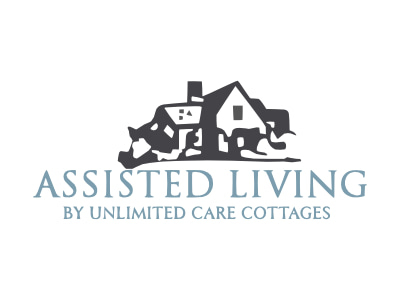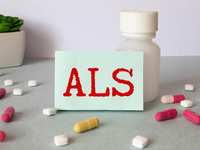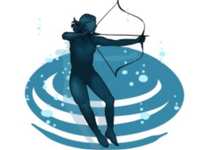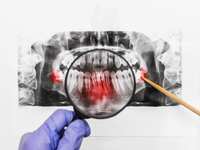Signs And Risk Factors For A Stroke: A Senior's Guide
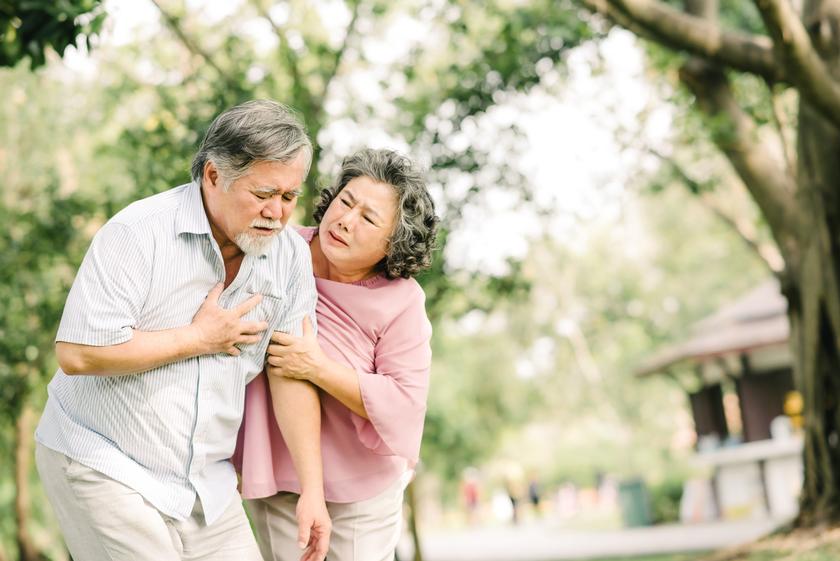
Signs and Risk Factors for a Stroke Within the realm of stroke awareness, two pivotal components emerge as the differentiating factors between life and death – the recognizable signs and the associated risk factors. Regrettably, a considerable portion of the population remains oblivious to these crucial indicators. Tragically, many only grasp the potential peril when it has already become an irreversible reality.
Should the warning signs and risk factors of a stroke elude your awareness, the time has come to recalibrate your understanding. Familiarity with the Signs and Risk Factors of a stroke is imperative.
Rest assured, the intention here is not to instill fear, but to present unembellished truths. Lacking knowledge about these inherent dangers and symptomatic cues could hinder your capacity to identify a stroke transpiring within someone – or even within yourself.
TABLE OF CONTENTS:
- Recognizing the Risk Factors for Stroke
- Signs and Risk Factors for a Stroke: A Senior’s Guide
- Responding Fast to Stroke Symptoms
- Signs and Risk Factors for a Stroke: A Senior’s Guide
- Amplifying Stroke Awareness through Mass Media Campaigns
- Addressing Stroke Risks in Rural Areas: A Crucial Conversation
- FAQs in Relation to Signs and Risk Factors for a Stroke
- Conclusion
RECOGNIZING THE RISK FACTORS FOR STROKE
Understanding stroke risk factors is crucial in preventing this brain attack. Let’s delve into some of these key contributors.
THE IMPACT OF HIGH BLOOD PRESSURE – A TREATABLE HEART RISK FACTOR
A leading cause of strokes, high blood pressure significantly increases your chances of experiencing a stroke. Excessive strain on your heart and blood vessels caused by high blood pressure can lead to strokes, yet this risk factor is manageable.
Fear not. This factor isn’t beyond our control. Regular medical check-ups to monitor your blood pressure levels are essential. If consistently elevated, lifestyle modifications such as reduced salt intake and increased physical activity might be suggested, along with medication if necessary.
THE POWER OF EXERCISE: BATTLING OBESITY & REDUCING STROKE RISKS
An active lifestyle does wonders when it comes to mitigating obesity a significant contributor to increasing one’s stroke risks. Routine exercise aids weight management, which subsequently reduces stress on our cardiovascular system keeping us healthier overall.
Other established risk factors include smoking habits, mismanagement of diabetes, among others, as well as age-related risks where older individuals face higher susceptibility.
While genetics may not always play a role, numerous other determinants lie within our daily routines, providing opportunities for proactive prevention against this life-threatening event known commonly as a “brain attack.”
Remembering past experiences also plays a crucial role, especially after having survived prior strokes it guides you better about what changes need to be made, whether they’re related to diet alterations or adherence to medications meant for treating conditions like high cholesterol or heart disease, which could potentially trigger another episode.
This understanding helps us take charge, minimizing potential threats before they escalate further, thus ensuring longevity while maintaining a quality life post any unfortunate incidents.
Stroke risk factors are not just about genetics; they’re often tied to our daily habits. High blood pressure, obesity, smoking, and poor diabetes management can all up the ante. Regular check-ups, exercise, and lifestyle tweaks can help keep these threats at bay. Remember: prevention is better than cure.
SIGNS AND RISK FACTORS FOR A STROKE: A SENIOR’S GUIDE
Explore our comprehensive guide to gain a deep understanding of the critical signs, as well as the various risk factors, including stroke risk factors, associated with the onset of a stroke. Empower yourself with the knowledge needed to recognize the subtle warning signals and identify the potential triggers that could lead to a stroke. By delving into this resource, you will not only arm yourself with the ability to make informed decisions about your health but also equip yourself to take prompt action in those crucial moments when time is of the essence. Stay proactive, prioritize your well-being, and remain vigilant against the threat of strokes, ensuring that you can respond effectively to safeguard your health or the well-being of those around you.
UNVEILING THE WARNING SIGNS OF STROKE
Recognizing the warning signs of a stroke stands as your primary defense. This knowledge empowers quick action, as timely medical attention is crucial. A stroke can strike suddenly, emphasizing the importance of preparedness. Stroke occurs. Swift recognition leads to faster intervention, potentially lessening its impact. This awareness not only safeguards your well-being but also extends to those around you, reinforcing the collective commitment to health and safety.
SUDDEN SEVERE HEADACHES – A CRUCIAL INDICATOR OFTEN MISSED
A sudden, severe headache could potentially signal an impending stroke. These aren’t your everyday headaches; they are intense and seem to come out of nowhere, often linked to abnormalities in the blood vessels.
If you encounter such a headache coupled with other symptoms like speech difficulties or vision issues, it’s imperative that you seek immediate medical attention. Every minute counts when dealing with strokes – remember, time lost equates to brain loss.
DECODING TIAS – THE ‘WARNING STROKES’
A Transient Ischemic Attack (TIA), often referred to as a ‘mini-stroke’ or ‘warning stroke’, may precede an actual ischemic stroke. During TIA episodes, blood flow is briefly obstructed but quickly restored before causing permanent damage.
TIA presents similar symptoms as regular strokes but only lasts for a few minutes and then disappears completely without any lasting effects on health status. However, even if the symptoms resolve rapidly, don’t ignore them. About one-third of people who experience TIAs go on to suffer from full-blown strokes within 1-year post-TIA event occurrence.
Always keep this mantra at heart: Swift recognition and response towards these warning signs might just save someone’s life – perhaps even yours.
RESPONDING FAST TO STROKE SYMPTOMS
A stroke occurs when blood flow to the brain is disrupted, often due to blood clots, making every second count. Immediate action can help preserve brain function and minimize long-term damage.
An effective tool for remembering key signs of a stroke is the FAST acronym:
- Face drooping: A numb or drooping face, especially an uneven smile, could be indicative of a stroke.
- Arm weakness: If one arm feels weak or goes numb suddenly and drifts downward when raised alongside the other arm – it’s time to raise alarm bells.
- Speech difficulty: Struggling with speech or understanding others may signal that a stroke is happening. Simple sentence repetition might reveal abnormalities in speech patterns.
- Time to call 911: Any observation of these symptoms necessitates immediate emergency medical attention even if they disappear after some time. The American Stroke Association suggests noting down symptom onset times as this information aids healthcare professionals in determining appropriate treatment options swiftly.
BEYOND FAST – ADDITIONAL SIGNS TO LOOK OUT FOR
Certain less-known warning signs are equally important for early detection. These include sudden severe headaches without any known cause and unexplained bouts of dizziness or loss of balance which often get overlooked due to their non-specific nature but could indicate a disruption in blood flow within certain parts of your brain.
SIGNS AND RISK FACTORS FOR A STROKE: A SENIOR’S GUIDE
Seniors have an elevated risk of strokes, so it is essential that they be aware of the warning signs and comprehend recognized risks. Studies reveal that while seniors generally have knowledge about stroke risk factors like heart disease and high blood pressure, their awareness of the warning signs is significantly lacking.
This knowledge gap can have devastating consequences, as early detection of symptoms plays a vital role in reducing the damage caused by a stroke. Seeking prompt medical attention following the onset of sudden severe headaches or unilateral weakness can dramatically improve treatment outcomes and recovery prospects.
RECOGNIZING WARNING SIGNS: AN AWARENESS DRIVE
To bridge this information void, concerted efforts must be made to educate older adults about prevalent stroke warning signs, such as abrupt numbness or weakness on one side, confusion coupled with difficulty speaking or comprehending speech, vision issues affecting either eye, balance problems leading to trouble walking, and unexplained severe headaches, among others.
An effective tool often recommended by healthcare experts is the FAST acronym (Face drooping, Arm weakness, Speech difficulty – Time to call 911). This mnemonic could potentially save lives if it becomes common knowledge among senior citizens who face higher risks due to age-related health conditions like prior strokes or ischemic heart disease.
MAINTAINING HEALTH POST-STROKE THROUGH REGULAR CHECKS
In addition to enhancing symptom recognition skills among older adults who have had prior stroke experiences, regular health checks play a pivotal part in managing potential risks associated with recurrent events. High blood pressure readings might indicate a greater susceptibility to experiencing another brain attack, which may otherwise go unnoticed until it is too late.
Regular screenings also help detect other treatable heart risk factors, such as elevated cholesterol levels, which contribute largely to ischemic-type strokes. In these strokes, blockage within the carotid arteries disrupts the oxygen-rich blood flow into our brains, causing irreversible cell death unless promptly treated.
So don’t wait until you experience seizure-like episodes. Start taking charge of your health now.
Seniors, don’t be caught off guard. Recognize stroke signs like sudden headaches or one-sided weakness and remember the FAST acronym. Regular health checks are crucial too – they can spot potential risks early on. Knowledge is power when it comes to strokes.
AMPLIFYING STROKE AWARENESS THROUGH MASS MEDIA CAMPAIGNS
In the age of digital communication, mass media campaigns have become a powerful tool for health education. As research suggests, these campaigns can significantly enhance public understanding of stroke warning signs and risk factors.
ACKNOWLEDGING IMPACT AMONG YOUNGER DEMOGRAPHICS
Youth engagement with various digital platforms makes them highly receptive to messages delivered via mass media. Educational campaigns targeting this group have shown a marked improvement in recognizing symptoms such as sudden severe headaches or numbness that could indicate an ischemic stroke.
- An Australian case study demonstrated how TV ads emphasizing FAST (Face drooping, Arm weakness, Speech difficulty) led to increased emergency calls reporting potential strokes.
THE CHALLENGE AMONG OLDER ADULTS – A HIGH-RISK GROUP
- Interventions based in the community may be more effective at reaching out to elderly individuals who are not tech-savvy.
- Distribution of traditional materials like leaflets/brochures at local clinics/senior centers can help raise awareness.
- Mixing different approaches is recommended by experts – combining conventional methods with targeted online content will cater to a diverse audience across all ages, promoting greater knowledge about established risk factors and warning signs linked with strokes.
TAKING ACTION POST-PRIOR STROKE EVENT:
ADDRESSING STROKE RISKS IN RURAL AREAS: A CRUCIAL CONVERSATION
Nearly 40% of the population lives in rural areas, and they often face difficulties getting medical care – including timely stroke treatment. These regions often grapple with significant challenges when it comes to accessing medical services – and this includes prompt treatment for stroke events.
LEVERAGING TELEMEDICINE SERVICES FOR TIMELY INTERVENTION
Telemedicine services, which enable patients to consult doctors remotely through video conferencing technology, have emerged as potential game-changers here. They allow swift diagnosis and initiation of treatments like clot-busting drugs critical during an ischemic stroke event.
THE POWER OF EDUCATION IN MITIGATING RISK FACTORS AND RECOGNIZING WARNING SIGNS
Educational programs play an instrumental role in enhancing awareness about established risk factors such as high blood pressure or obesity, along with common warning signs including sudden severe headaches or weakness on one side.
- Promoting community-based initiatives focused on regular workshops or information sessions regarding lifestyle modifications necessary for reducing risks associated with strokes – quitting smoking being a prime example.
- Fostering school-based interventions aimed at instilling early knowledge about healthy habits, thereby creating future generations better equipped against strokes.
BRIDGING THE GAP THROUGH LOCAL INFRASTRUCTURE DEVELOPMENT
To further enhance accessibility within these regions, there needs to be a continuous investment in local infrastructure development, including setting up more primary care clinics staffed by trained professionals capable of promptly identifying potential cases, thus facilitating quicker referral processes if needed.
FAQS IN RELATION TO SIGNS AND RISK FACTORS FOR A STROKE
WHAT ARE THE RISK FACTORS AND WARNING SIGNS OF A STROKE?
Risk factors include high blood pressure, heart disease, diabetes, smoking, lack of exercise, and obesity. Warning signs involve sudden weakness or numbness on one side of the body, and trouble speaking or understanding speech.
WHAT ARE THE 4 RISK FACTORS FOR STROKE?
Four major risk factors for stroke are high blood pressure, heart disease, diabetes, and smoking.
WHAT ARE THE SIGNS OF A STROKE IN A SCHOLARLY ARTICLE?
A scholarly article would identify symptoms such as sudden severe headaches, weakness or numbness in the face or limbs, difficulty with speech, vision problems, and dizziness.
WHAT ARE THE RISK FACTORS FOR STROKE?
The main risks include hypertension (high blood pressure), cardiovascular diseases like atrial fibrillation and carotid artery disease, along with lifestyle habits such as smoking and excessive alcohol consumption.
CONCLUSION
Understanding the fundamentals of stroke is key to safeguarding your health. Recognizing risk factors such as high blood pressure, lack of exercise, and obesity can help you take preventive measures. Awareness about signs like sudden severe headaches or Transient Ischemic Attacks (TIAs) could be lifesaving in a critical situation.
The FAST acronym serves as an easy guide to identifying stroke symptoms quickly and accurately. Increasing awareness among older adults, who are more susceptible to strokes, is crucial for timely intervention. Mass media campaigns have shown effectiveness in spreading knowledge about stroke warning signs, but there’s room for improvement, especially among seniors.
Rural areas pose unique challenges due to limited access to medical care – targeted strategies need to address this issue. Your journey doesn’t end with surviving a stroke; managing your health post-stroke through lifestyle changes and medication adherence is equally important. Oakridge Assisted Living, our privately owned community, provides personal care cottages that focus on offering comprehensive support tailored specifically for seniors’ needs including.

